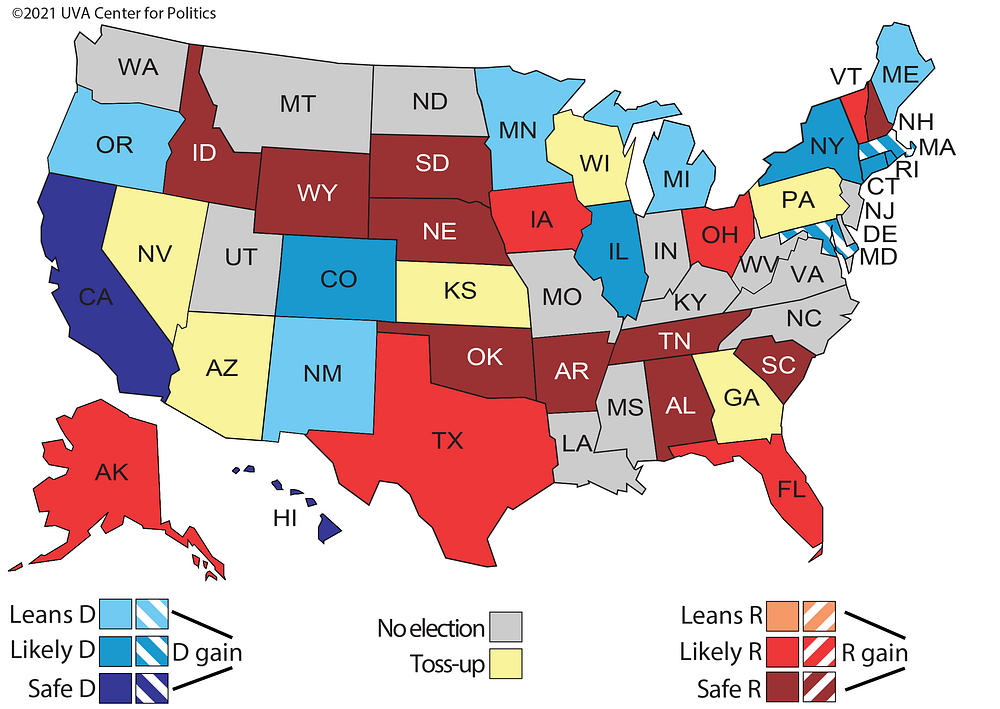By Kent R. Kroeger (Source: NuQum.com, January 6, 2022)
[Author’s Note: The opinions and errors found in this essay are mine alone. And do not make personal health or financial decisions based on this essay.]
From the start, this blog has been about the democratization of policy data and public policy analysis. Today, every internet-connected human has access to more quality scientific and social data than the most sophisticated policy experts did thirty years ago.
With only a modest background in data management and statistics, an average citizen today can independently assess the performance of their political leaders on a level that would have been impossible a generation ago.
It is no longer necessary to depend on the national news media to learn how things are going in this country, you merely need a high-speed internet connection, free statistical and database software, some basic math knowledge and an ounce of gumption. Or, know somebody with those resources.
Is it a coincidence that the public’s respect for politicians and policy experts has been in a near lockstep decline with the rise in publicly accessible raw data on their performance? No longer does information about our leaders and policy experts need to be filtered and interpreted by the elite-centric national news media. And, increasingly, it isn’t.
In 1997, the Gallup Poll reported that 68 percent of the U.S. public had a “great deal” or “fair amount” of trust in the federal government’s ability to handle international problems and 51 percent had that level of trust in the government for domestic problems. In 2021, those trust numbers stood at 39 percent.
Nowhere have the policy results generated by our political and expert class been more observable than the COVID-19 pandemic.
In what Arizona Democratic Party leaders call a Faustian pact, Arizona Governor Doug Ducey has kept his state’s economy open during the pandemic, arguably leading to 5,600 more COVID-19 deaths than his state should have had given the national COVID-19 death rate (3,376 deaths per 1 million people in Arizona versus 2,609 per 1 million people nationally).
Has it been worth it? According to the U.S. Bureau of Economic Analysis, Arizona had the 5th fastest growing state economy between Q1 2020 and Q1 2021.
If COVID-19 deaths are your preferred metric, one can understandably claim Ducey’s COVID-19 policies failed on an epic level, just as easy as it is for Governor Ducey (who is not running for re-election in 2022) to claim glorious success.
Arizona’s strong economy cannot be dismissed, but neither can 5,600 excess deaths. In the end, the voters will judge.
But will this information really matter? Are we so distracted by the partisan theater featured daily on the news that we don’t need to think anymore about such things before filling in the ovals on the ballot?
In 2014, Ducey won the Arizona gubernatorial race by almost 12 points. Current projections say the Republican nominee in the 2022 race will win by 0.3% of the two-party vote. Not all of the decline can be attributed to COVID-19, but it is more than plausible that the failure of Ducey’s COVID-19 policies account for a big share of it.
Georgia shares a similar story to Arizona’s, with a Republican governor championing his pro-growth COVID-19 policies (9th fastest growing state economy between Q1 2020 and Q1 2020) while his state experienced an above average COVID-19 death rate.
Georgia’s 2022 governor’s race is called a toss-up by The University of Virginia’s Larry Sabato.
Arizona and Georgia, once solid red states, were slowly turning blue (or at least a deep purple) before the pandemic began. The electoral story is startingly different in some key red states led by Republican governors, however. In Alabama, Arkansas, Florida, South Carolina, South Dakota, Tennessee, and Texas — which are all experiencing higher COVID-19 death rates than the national average — Republicans are poised for easy gubernatorial victories in 2022, according to Sabato. Not coincidently, perhaps, these same states experienced average or above average economic growth during the first year of the pandemic. (Figure 1 shows Sabato’s current predictions for all of the 2022 gubernatorial races.)
Figure 1: Predictions for 2022 gubernatorial races (Univ. of Virginia Center for Politics, Prof. Larry Sabato)

A better test case of the influence of state-level COVID-19 policies and economic growth on electoral outcomes may be the 2022 Wisconsin gubernatorial race, where Democrat incumbent Tony Evers is seeking re-election. In 2018, he won the race by one percent of the vote. Current predictions consider Wisconsin a similar toss-up.
It is unfair, in my opinion, to suggest voting for a pro-growth, anti-lockdown Republican is tantamount to turning a blind eye to the suffering caused by COVID-19. As one of my workmates put it recently, “This is a virus that kills unhealthy people. Who do I blame for that?”
[Our overpriced, inadequate health care system, perhaps?]
Does it make a difference that the average age of the person who died during the 1918 Spanish Flu was 28 years, where most U.S. deaths from COVID-19 have been people aged 65 years and older. It may sound macabre to ask the question, but it must be considered as we head into the midterm elections.
Are undecided and disaffected American voters going to allow their mourning for the COVID-19 dead (and fear of future deaths) heavily influence their final vote decisions? Or are a decisive number of these voters going to weigh economic growth under the banner of personal freedom above the death of thousands of their own state’s residents?
(And, of course, it is possible none of these factors play an important role in many of the midterm elections.}
We will likely find out the answer in about 10 months.
- K.R.K.
Send comments and bitcoin account access to kroeger98@yahoo.com
